Abstract
The concept of propensity to use ambulatory care is defined as the probability that a utilization occurs in a very small interval of time, given that no utilization has been observed before. With this definition of utilization, survival analysis can be used to assess the effect of a set of predictors on utilization. The results of this analysis are compared with the results of the prediction of utilization by the same set using a logistic regression model and a linear regression model.
Full text
PDF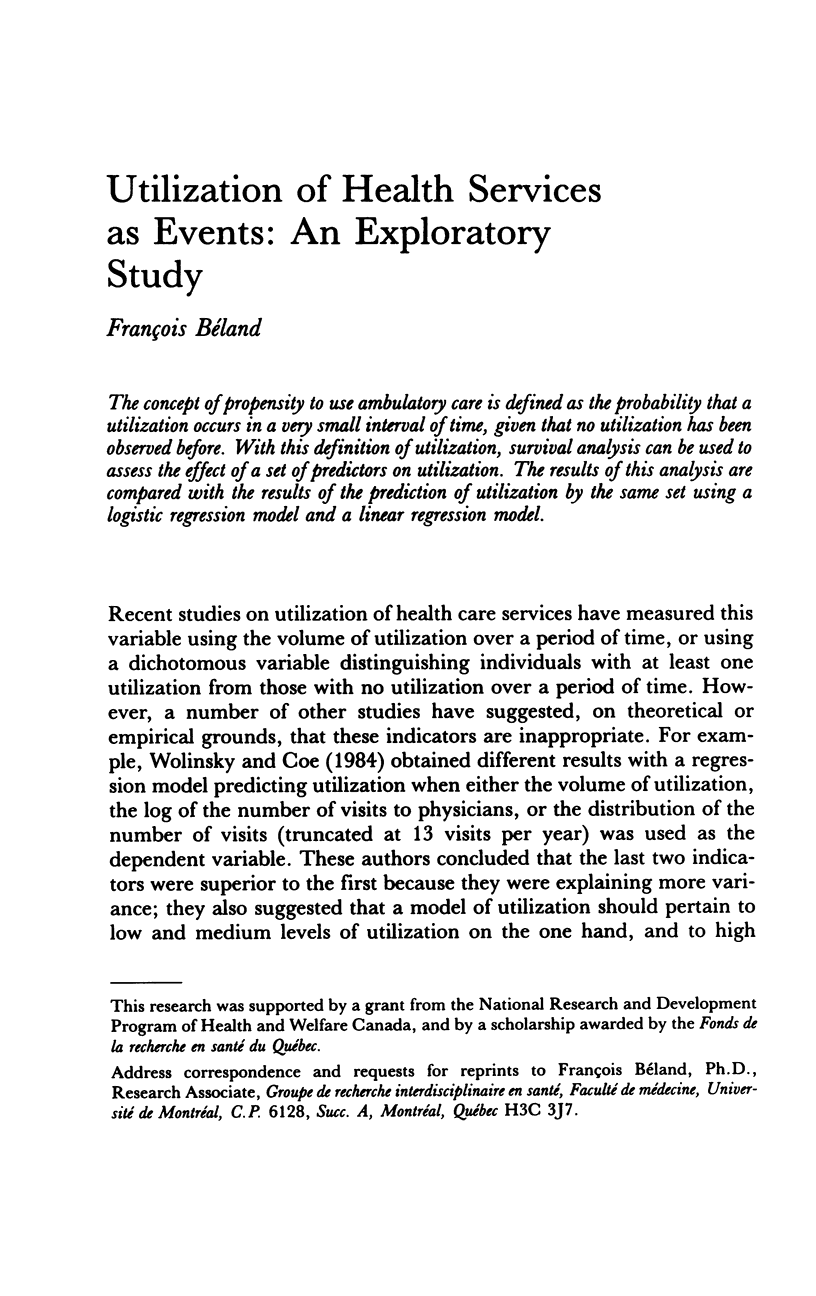

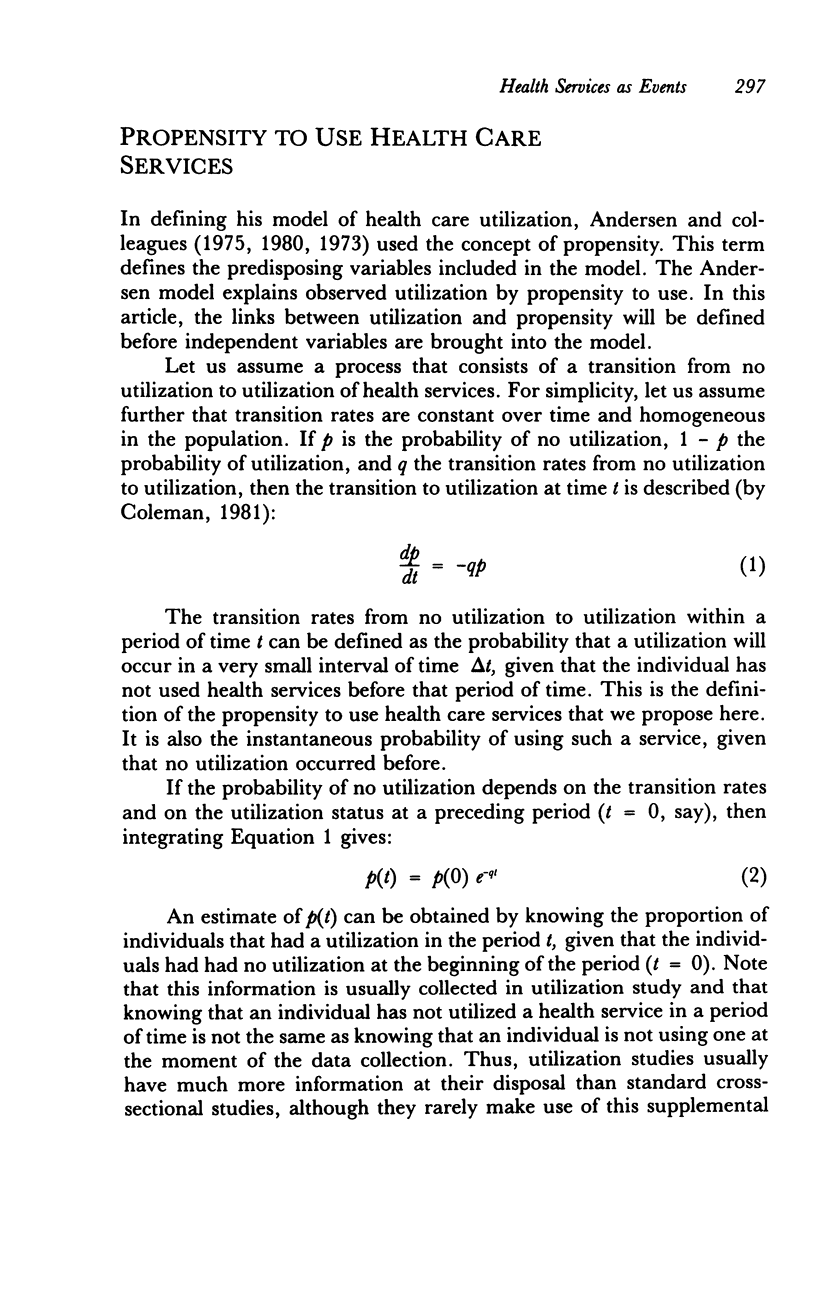
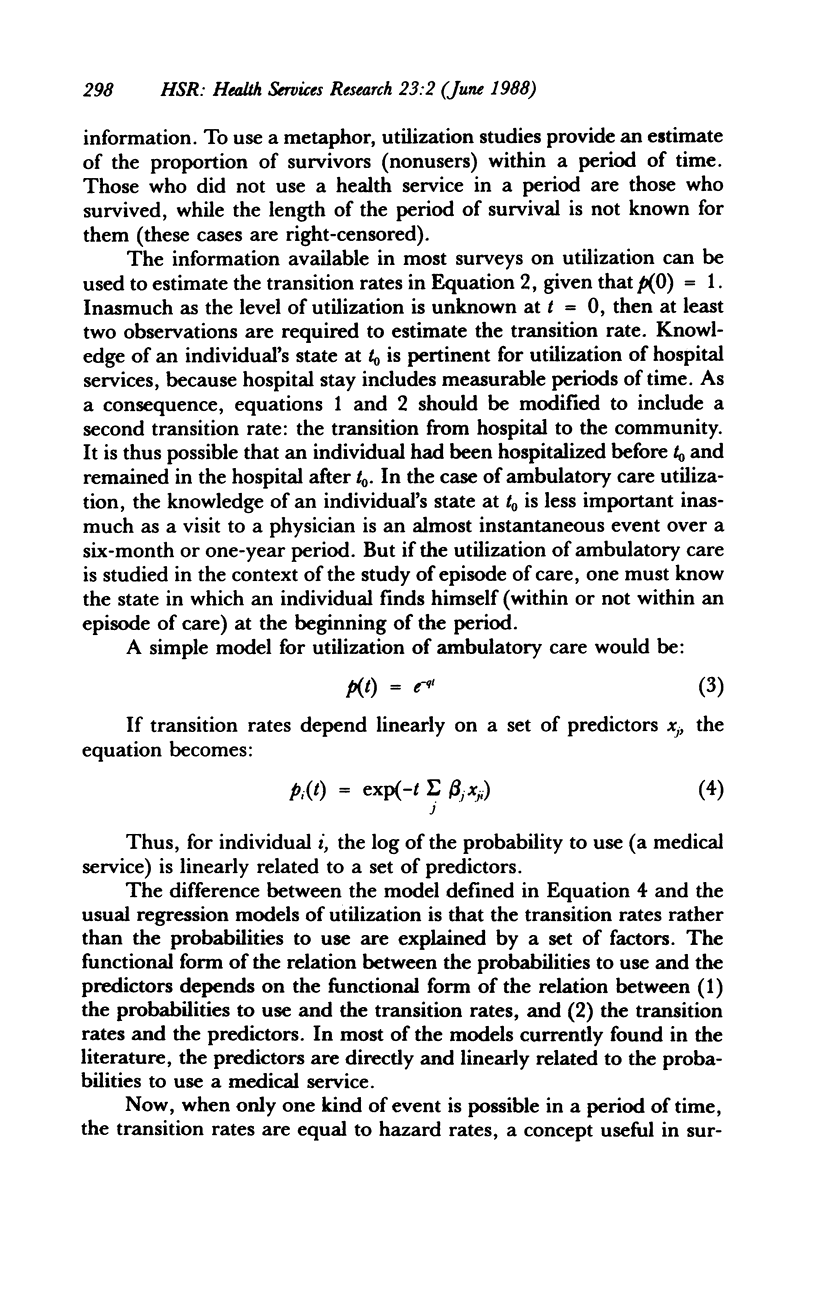

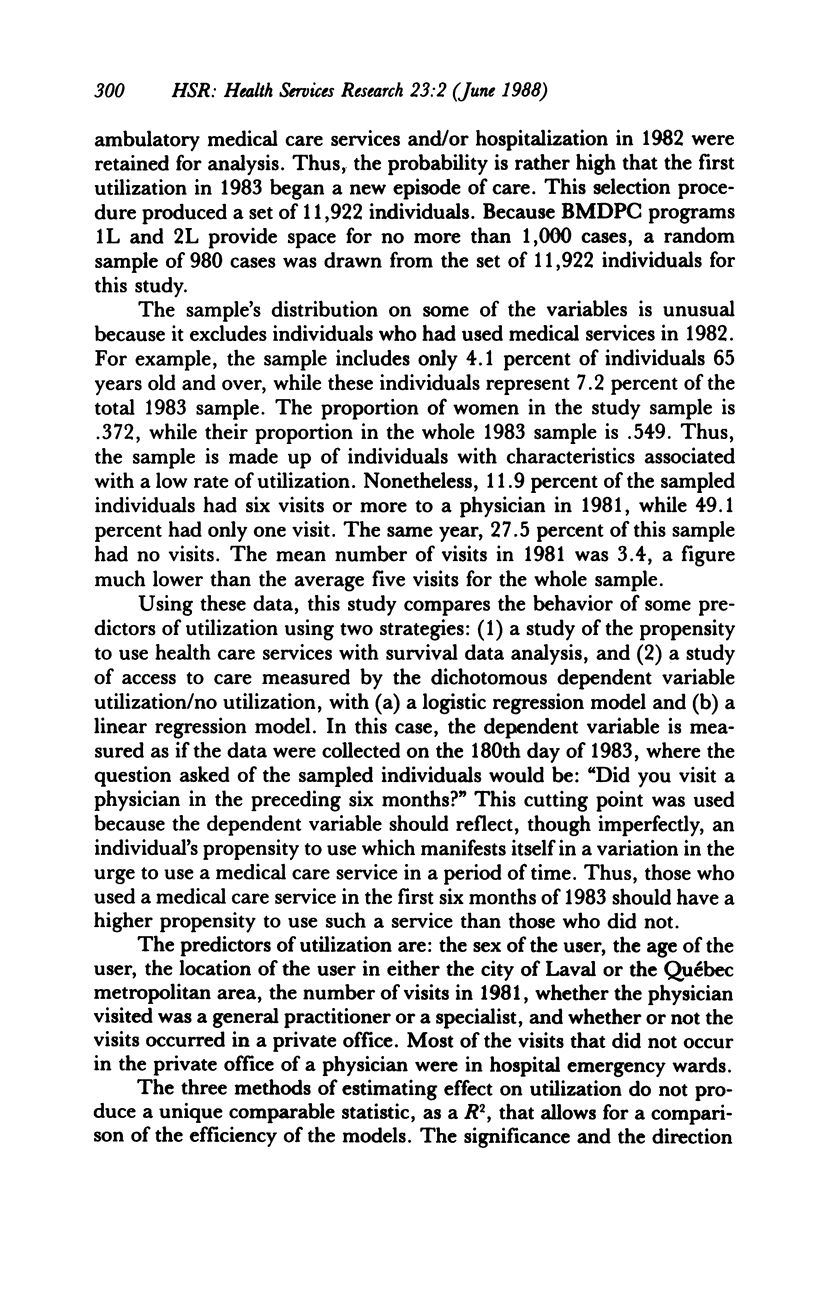
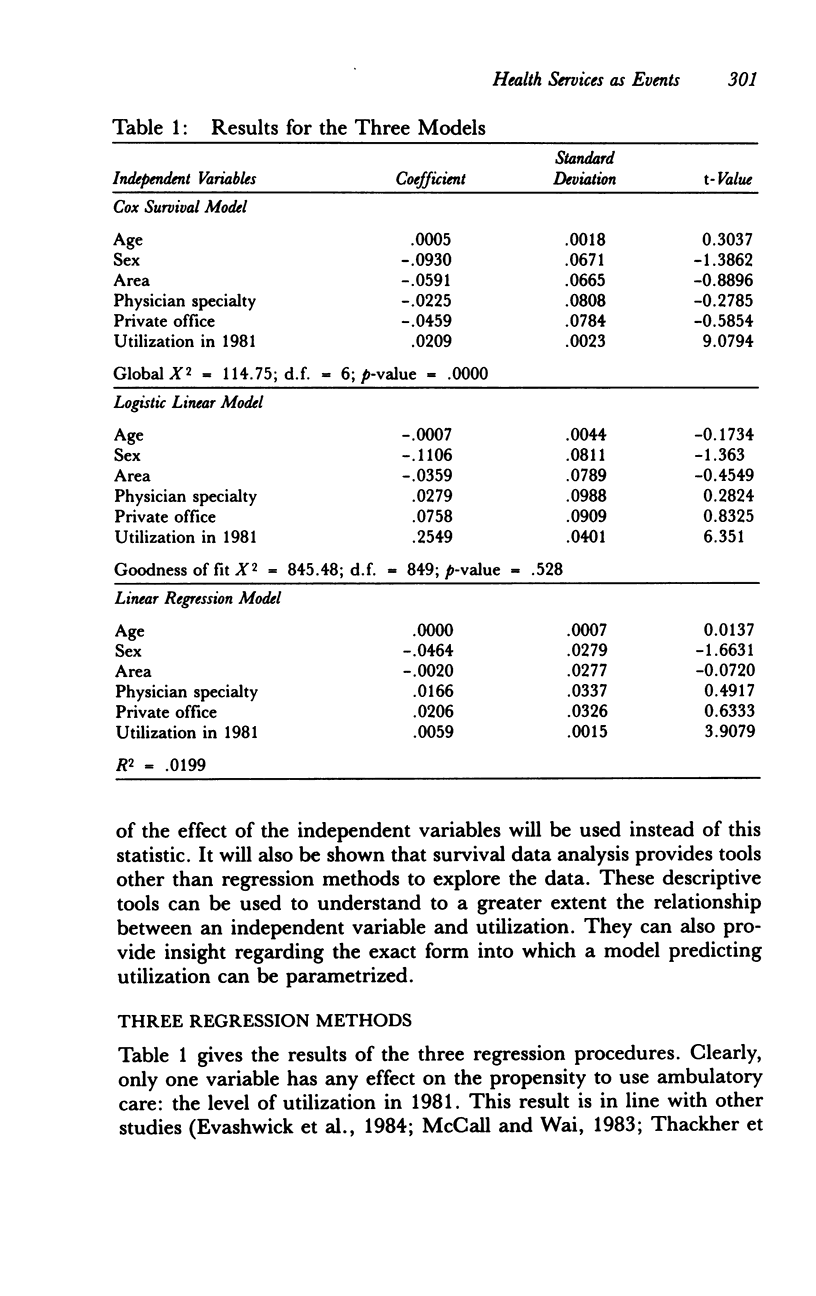

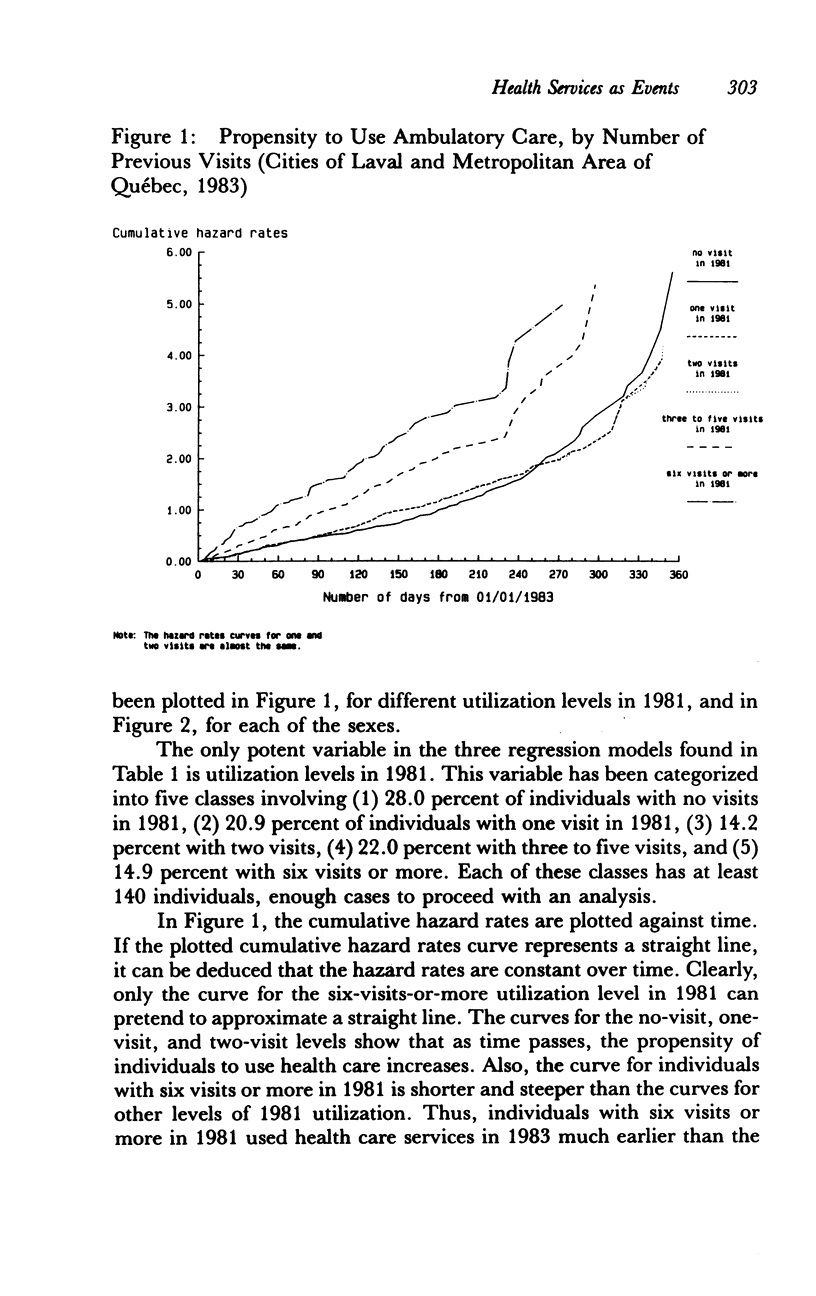
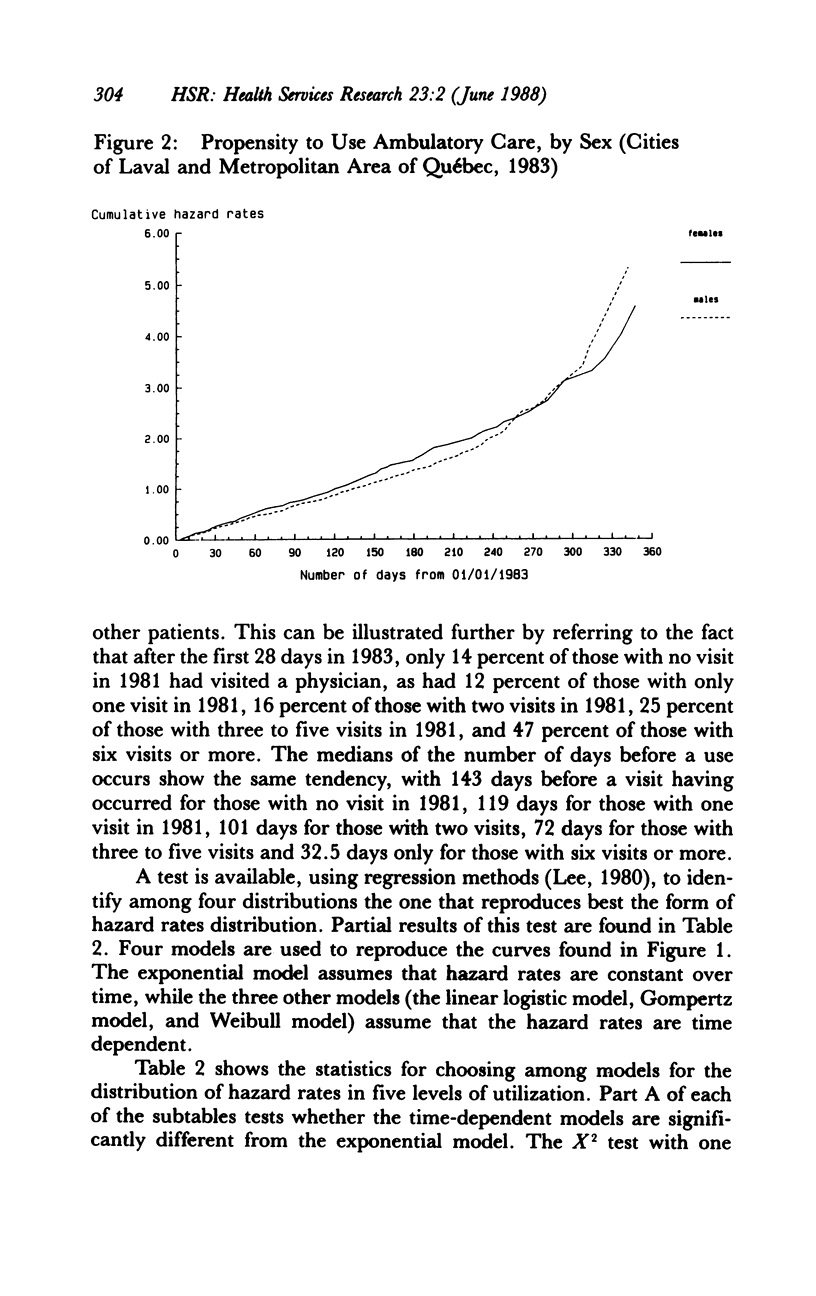
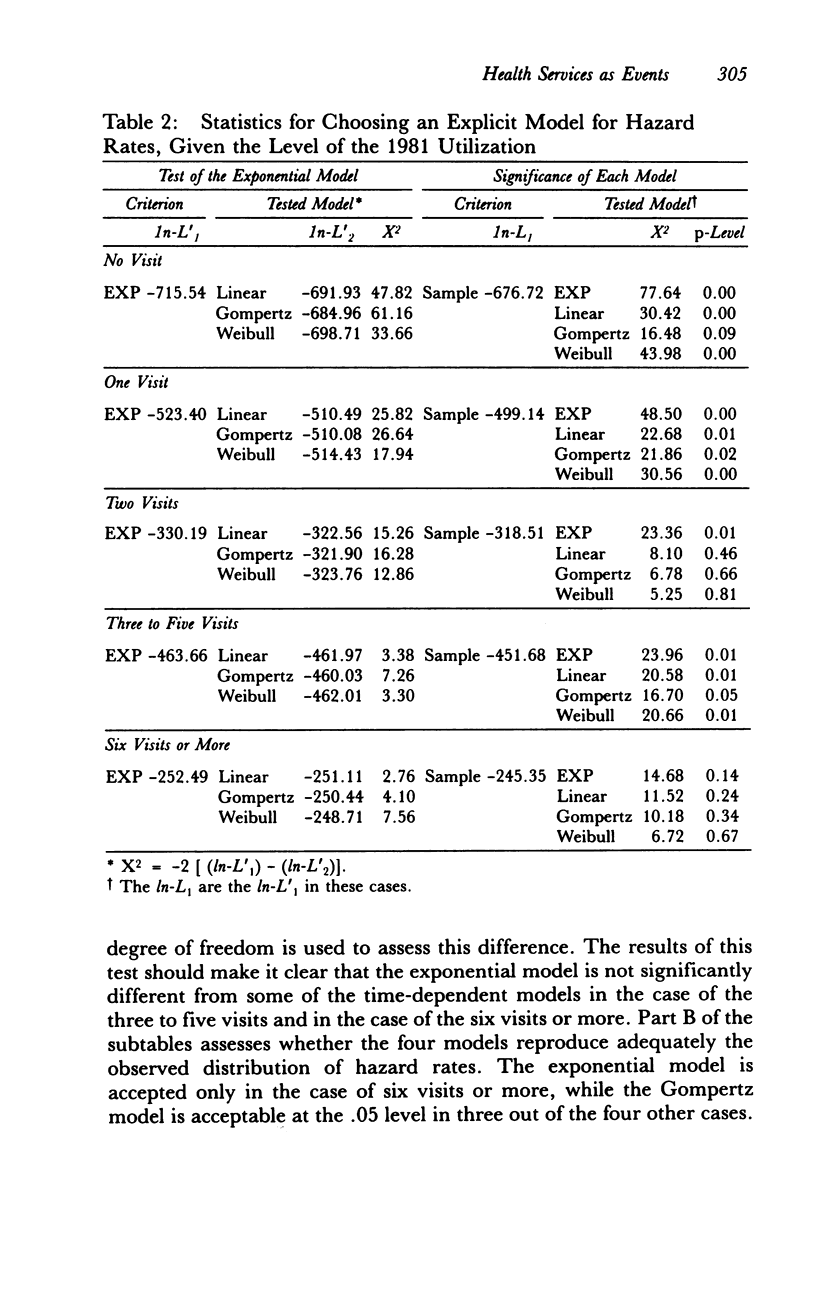

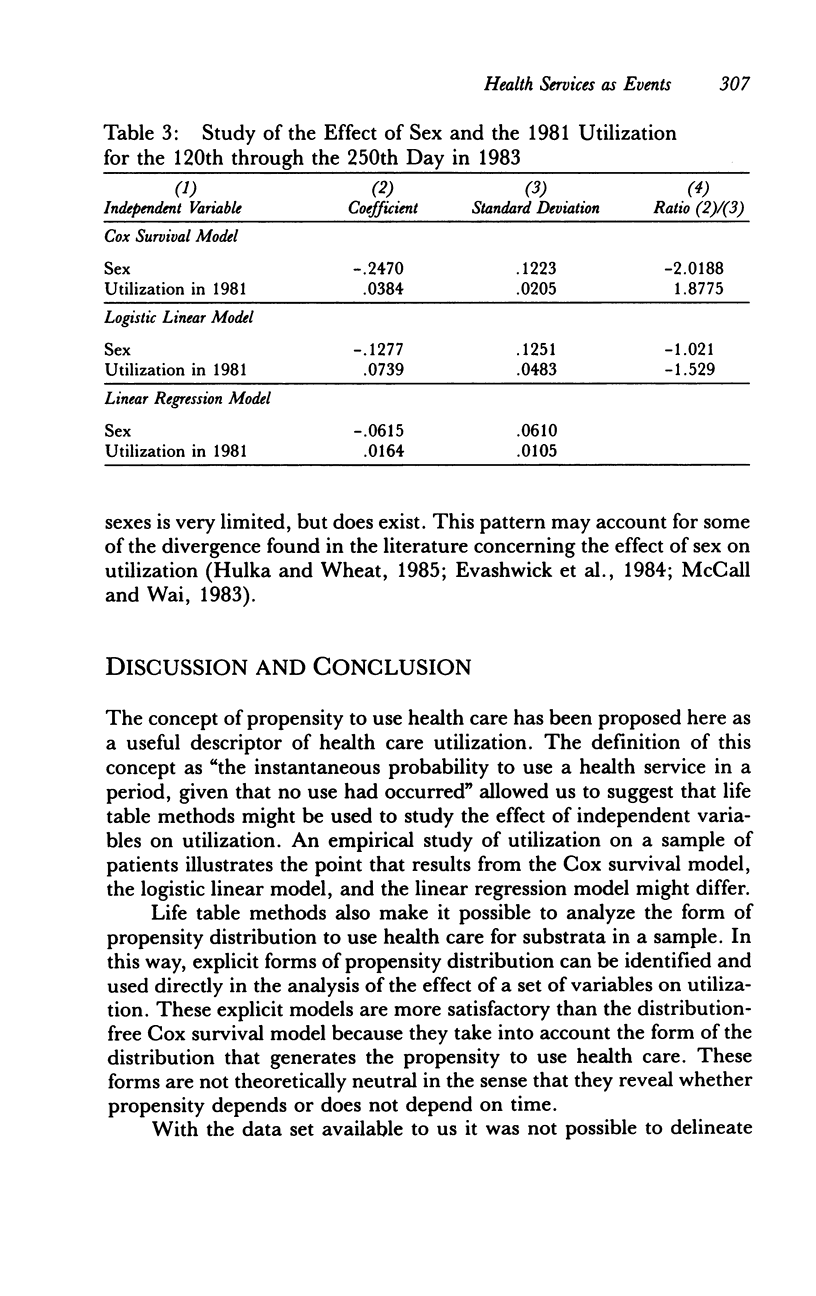
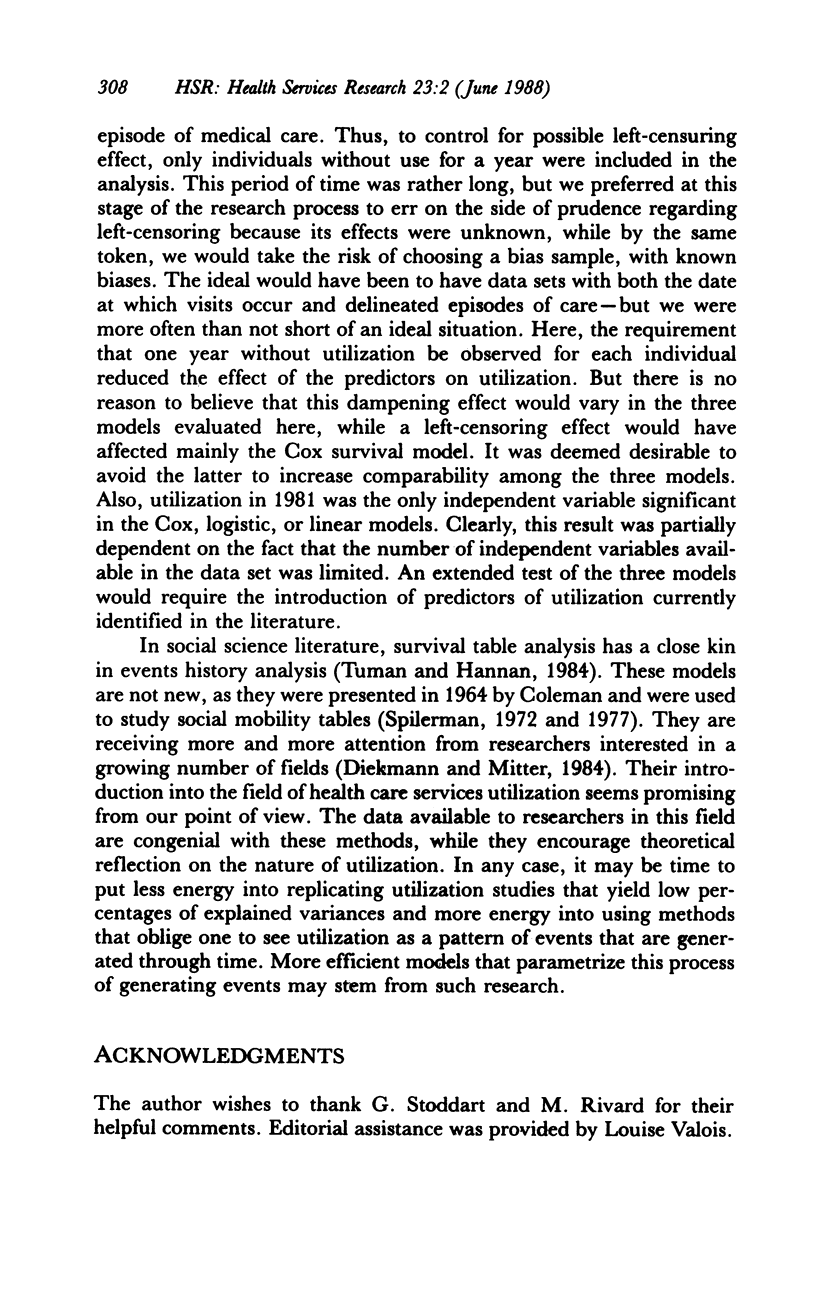
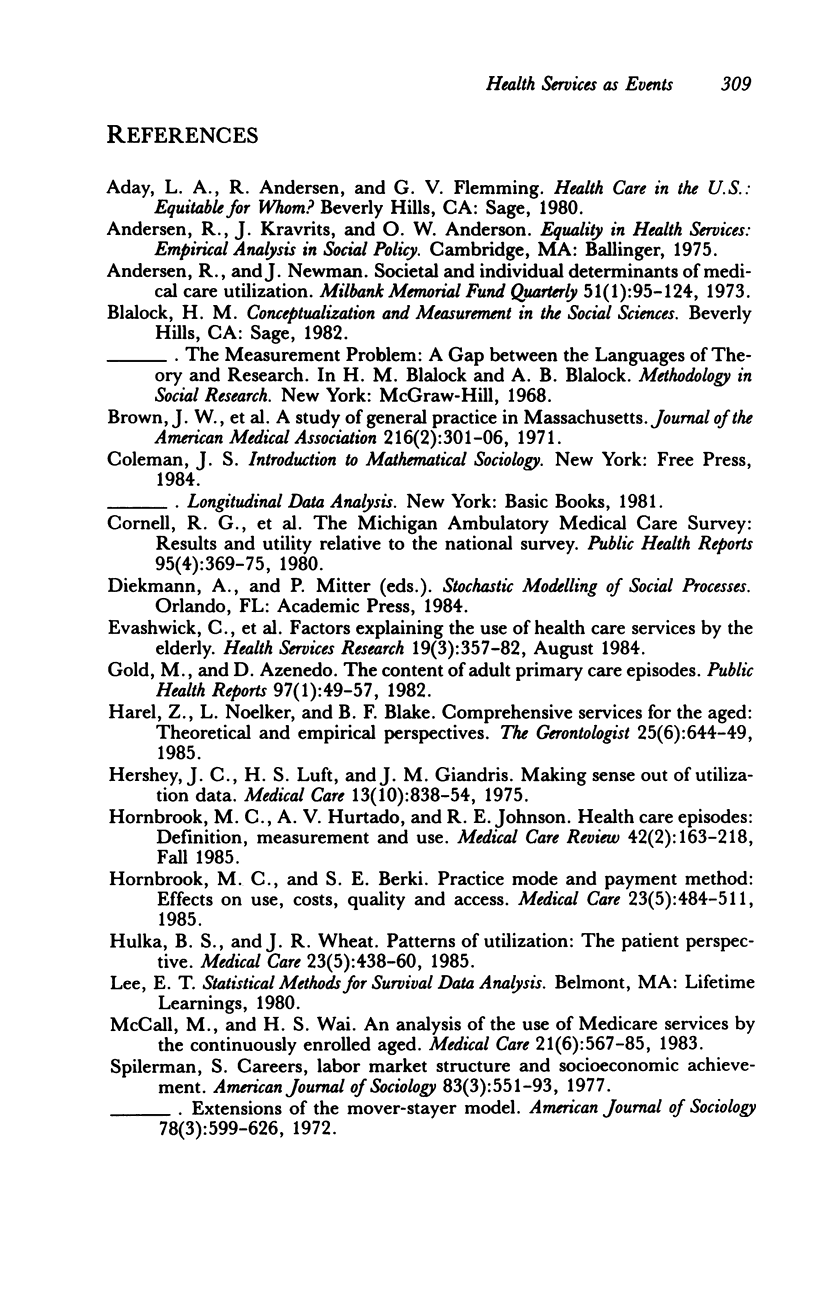

Selected References
These references are in PubMed. This may not be the complete list of references from this article.
- Andersen R., Newman J. F. Societal and individual determinants of medical care utilization in the United States. Milbank Mem Fund Q Health Soc. 1973 Winter;51(1):95–124. [PubMed] [Google Scholar]
- Brown J. W., Robertson L. S., Kosa J., Alpert J. J. A study of general practice in Massachusetts. JAMA. 1971 Apr 12;216(2):301–306. [PubMed] [Google Scholar]
- Cornell R. G., Landis J. R., Zemach R., Manela R., Wainstock E. J., Gardner H. H. The Michigan Ambulatory Medical Care Survey: results and utility relative to the National Survey. Public Health Rep. 1980 Jul-Aug;95(4):369–375. [PMC free article] [PubMed] [Google Scholar]
- Evashwick C., Rowe G., Diehr P., Branch L. Factors explaining the use of health care services by the elderly. Health Serv Res. 1984 Aug;19(3):357–382. [PMC free article] [PubMed] [Google Scholar]
- Gold M., Azevedo D. The content of adult primary care episodes. Public Health Rep. 1982 Jan-Feb;97(1):48–57. [PMC free article] [PubMed] [Google Scholar]
- Harel Z., Noelker L., Blake B. F. Comprehensive services for the aged: theoretical and empirical perspectives. Gerontologist. 1985 Dec;25(6):644–649. doi: 10.1093/geront/25.6.644. [DOI] [PubMed] [Google Scholar]
- Hershey J. C., Luft H. S., Gianaris J. M. Making sense out of utilization data. Med Care. 1975 Oct;13(10):838–854. doi: 10.1097/00005650-197510000-00004. [DOI] [PubMed] [Google Scholar]
- Hornbrook M. C., Berki S. E. Practice mode and payment method. Effects on use, costs, quality, and access. Med Care. 1985 May;23(5):484–511. doi: 10.1097/00005650-198505000-00011. [DOI] [PubMed] [Google Scholar]
- Hornbrook M. C., Hurtado A. V., Johnson R. E. Health care episodes: definition, measurement and use. Med Care Rev. 1985 Fall;42(2):163–218. doi: 10.1177/107755878504200202. [DOI] [PubMed] [Google Scholar]
- Hulka B. S., Wheat J. R. Patterns of utilization. The patient perspective. Med Care. 1985 May;23(5):438–460. doi: 10.1097/00005650-198505000-00009. [DOI] [PubMed] [Google Scholar]
- McCall N., Wai H. S. An analysis of the use of Medicare services by the continuously enrolled aged. Med Care. 1983 Jun;21(6):567–585. doi: 10.1097/00005650-198306000-00001. [DOI] [PubMed] [Google Scholar]
- Thomas J. W., Penchansky R. Relating satisfaction with access to utilization of services. Med Care. 1984 Jun;22(6):553–568. doi: 10.1097/00005650-198406000-00006. [DOI] [PubMed] [Google Scholar]
- Wolinsky F. D., Coe R. M. Physician and hospital utilization among noninstitutionalized elderly adults: an analysis of the Health Interview Survey. J Gerontol. 1984 May;39(3):334–341. doi: 10.1093/geronj/39.3.334. [DOI] [PubMed] [Google Scholar]


